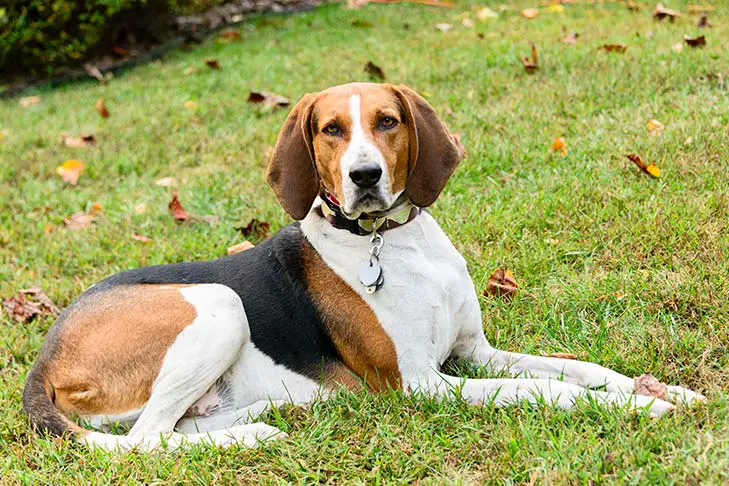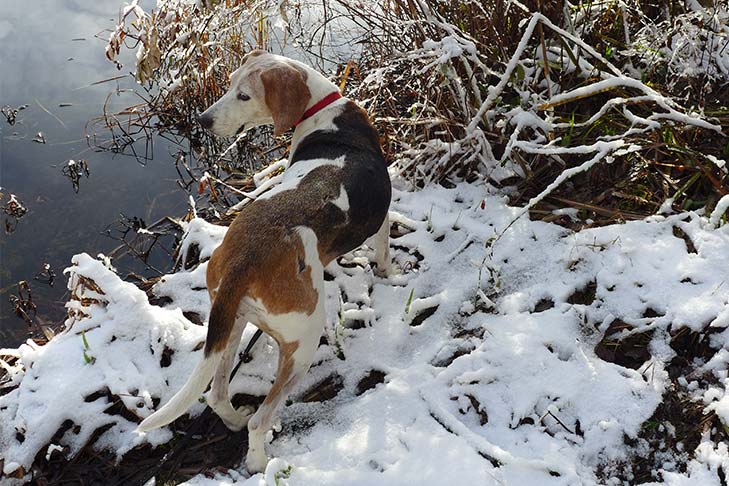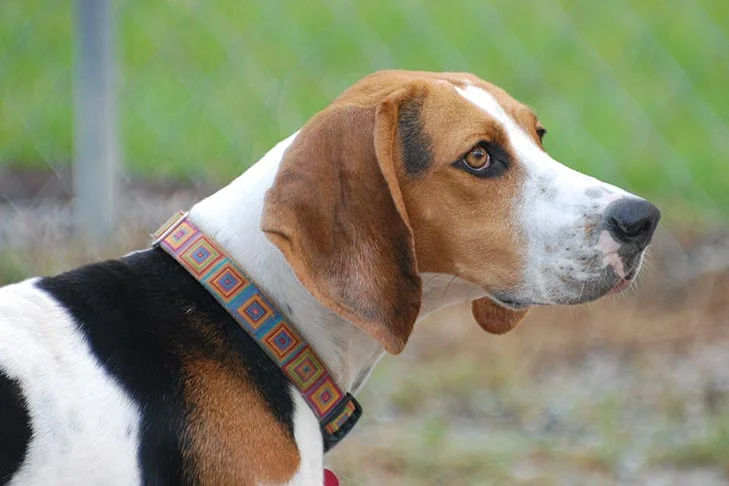Don’t let the name deceive you; Walkers are runners and capable of covering a lot of ground quickly. The Treeing Walker Coonhound is a real American favorite, nicknamed “The People’s Choice.” The sight of this speedy tricolored hound in full stride, with its long, strong legs, powerful and propulsive hindquarters, and streamlined frame all trying to cover as much territory as possible with the least amount of effort, is one of the few sights that can make a coon hunter’s heart race. Later, after an honest night’s labor, this sweet-faced hound will glance up and stir your soul with his kind, begging smile while enjoying the warmth of a bonfire. Oh my goodness, what a lovely image! Why else would Treeing Walkers be referred to as the People’s Choice?
Treeing Walker Coonhound
Average sizes and life
expectancy of the breed.
Height
22-27 inches (male)
20-25 inches (female)
Weight
50-70 pounds
Life Expectancy
12-13 years
Breed Traits & Characteristics
About the Breed

Owning a dog is not just a privilege; it’s a responsibility. They depend on us for, at minimum, food and shelter, and deserve much more. When you take a dog into your life, you need to understand the commitment that dog ownership entails.
 Health
Health
Recommended Health Tests From the National Breed Club:
- Hip Evaluation
- Ophthalmologist Evaluation
- Thyroid Evaluation
 Grooming
Grooming
 Exercise
Exercise
 Training
Training
 Nutrition
Nutrition
History
Let’s examine the name word by word. A hound is said to be “treeing” when it follows the scent of its prey until the prey climbs a tree for protection, at which point the hound camps out below and barks loudly and distinctively until the gun-toting hunter shows up. “Walker” refers to Thomas Walker of Virginia, a key figure in the early development of the breed around the middle of the eighteenth century. A dog called a “coonhound” was created to “tree” raccoons and, occasionally, larger prey.
The Virginia Hounds, which were descended from the first English Foxhounds imported to America, gave rise to the Walker Foxhound, which in turn gave rise to the Treeing Walker Coonhound. Initially categorized as an English Coonhound, the breeders of the Treeing Walker departed from the English variety in 1945 and selectively selected to maintain the traits they sought. It is a quick, hot-tempered, intelligent hunter, and its voice is either a steady, clear chop with a changeover at the tree, or a clear, ringing bugle. It quickly locates its prey and has exceptional stamina and climbing skills. It has a wide range and may stray from the path if it detects a stronger scent. The Treeing Walker has a reputation for being extremely competitive due to its speed as night-hunts gained popularity.
The Treeing Walker is sometimes referred to as a trailing hound with a treeing instinct and nevertheless has the same color and conformation as the Walker Foxhound.





